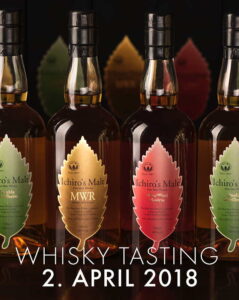If you look at the Japanese whisky culture, you will not only notice the differences in the enjoyment of the golden water of life, but also that the whisky from Japan is often very highly priced. This is mainly due to the fact that the domestic demand in the country is very high - and the world has now discovered Japanese whiskey as one of the best in the world. Due to the fact that Japanese whisky became known and sought after in the world very late, actually only after the first decade of the 21st century, there are also not yet so many old spirits waiting in barrels to be processed into a blend or bottled as a single malt.
In the meantime, a boom on Japanese whisky as an investment has also set in. Many of the whisky, which we make in the restaurant sansaro for you in small sips to taste, are no longer available on the market or only for amounts from 1,000 euros per bottle to buy. For whisky with age statement (e.g. Yamazaki 18, Taketsuru 21) the market is almost empty. Even those who try to buy in Japan usually only find bottles without Age Statement (NAS = No Age Statement). We still have our stocks well filled to continue to open up the world of Japanese whiskey to you and look forward to your visit.








